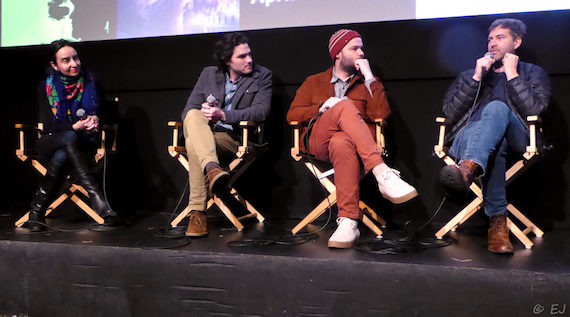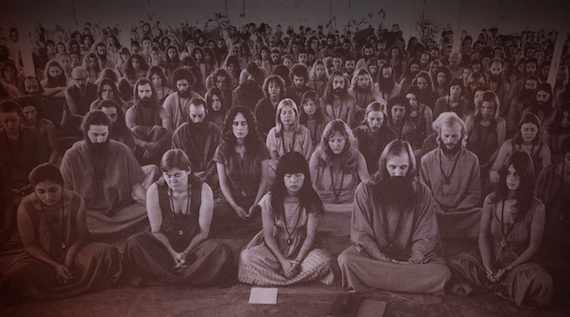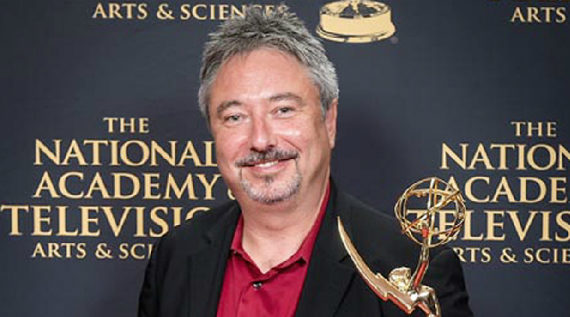
Words by Maggie Glass, a New York-based film editor and writer.
If any documentary has earned its rightful place in the Stranger Than Fiction series, it might be “Wild, Wild Country” — one of the more bizarre stories to appear in STF’s fourteen year history. Featuring a staggering amount of unearthed archival footage, the 6-part Netflix original documentary traces the origins of the Indian spiritual guru Bhagwan Rajneesh and the journey that brought him and his followers to create an unlikely home in a rural, isolated region of Oregon.
Directors Chapman Way and Maclain Way conduct extensive interviews with both the original Oregonians and the commune members, as they explore the cultural clashes that ensued after the Rajneeshees moved to town, first by the hundreds, then by the thousands, in the early 1980s. As one person said, before the arrival of the guru’s followers, “the biggest problem was the rotting floor in the fire station.” With their strange rituals, hints of free love, and eerie all-red wardrobe, the Rajneeshees were not particularly welcome in the tiny, conservative town of Antelope: population 40.
The Rajneeshees, on the other hand, felt that they posed no threat. Their goals were peaceful and utopian: to create a new city, built on the harmonious values of the Bhagwan. In the post-Vietnam age, many of the followers felt disillusioned by Western society and were seeking out different ways to exist in the world. “Everybody felt that they were there at the beginning of the great experiment,” said Swami Prem Niren, the Bhagwan’s attorney. “We really did feel like we were the chosen people.”
Led by Ma Anand Sheela, the Bhagwan’s fierce spokesperson, the Rajneeshees created a massive, ever-expanding city in the desert, prompting outrage from the displaced townspeople. During one archival interview, Sheela indicated that the commune members would not be intimidated by any amount of bad press or protest. “We’re not going anywhere,” she said calmly. “I will paint their bulldozers with my blood.” What follows is a tangle of violence, criminal charges, federal government involvement, and, as the series progresses, much, much more.
In the Q&A after the screening, directors Chapman Way and Maclain Way, along with Executive Producer Mark Duplass, joined STF founder Raphaela Neihausen in discussion of how this unusual story came to be told in the first place. “We were given 300 hours of archive footage,” said Maclain. “Most of which had never been seen before. As soon as we began transferring the footage, we just kind of fell in love with it, and the characters and the conflict and thought it would make for an incredible documentary.”
Despite the drama and tabloid-esque intrigue that surrounded the Rajneeshees, the directors were committed to depicting their subjects as nuanced and complex individuals. “As soon we started getting to know the characters, we came across these thoughtful, intelligent people who had had a lot of success, but weren’t fulfilled for whatever reason and joined this spiritual movement. So that was kind of an eye opening experience,” said Chapman. The directors had similar experiences with the ranchers, who appeared uniformly right-wing and starkly different from the filmmakers themselves. And yet, as the Way brothers gained deeper access, it was clear that the Oregonians came from many walks of life and had varying perspectives on the situation and the Rajneeshees themselves. “We couldn’t really pigeonhole either side,” said Maclain.
The series took many years to research and film, especially since most of the interview subjects were initially reluctant to tell their stories on screen. When asked about what conclusions they came to, after gaining such intimate knowledge of the conflict, the Way brothers found that they ended up with more questions than answers. “It was like detective work,” said Chapman, “where you draw your own lines between cult and religion.” Mark Duplass agreed that the beauty of the film lays in its exploration of these themes. “There’s an elegant cultural context,” he said. “There’s a bigger story than just the things you are going to see, which are exciting – the weapons and the bombs – but there’s something larger at play.”
The six-part series is available now on Netflix.
Videography by Joseph Schroeder, who has managed the production of highly acclaimed educational and informational programming for networks such as PBS, A&E and National Geographic for over a decade. Currently the Vice President of Production and Operations of The Independent Production Fund. Follow him on Twitter and see more of his work on his website.
Related Film






